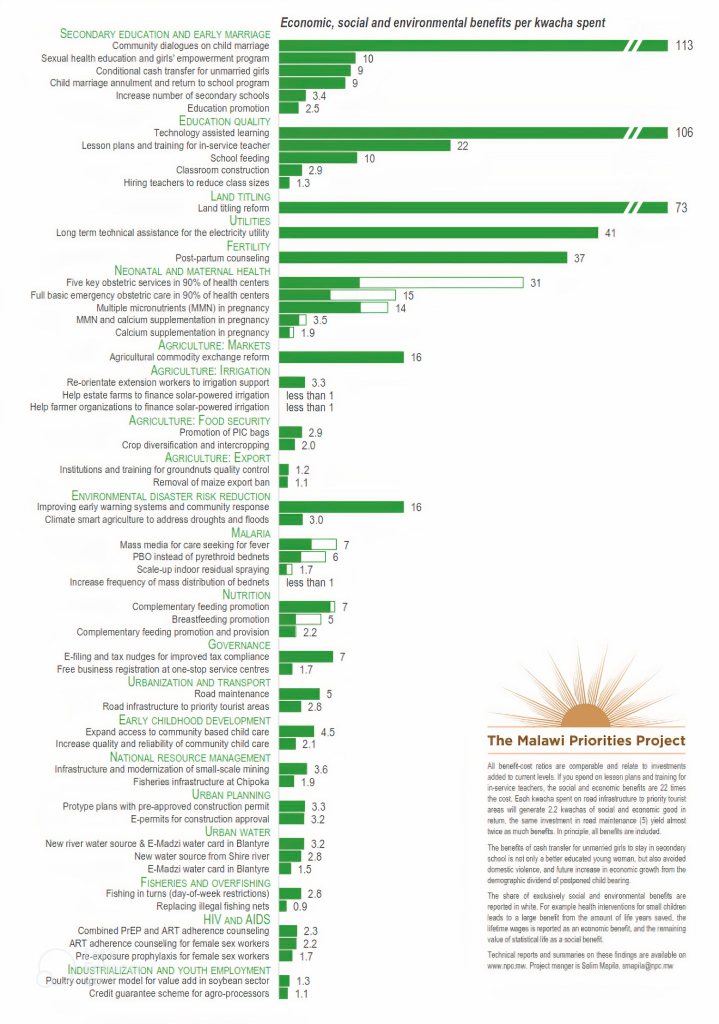This article first appeared on the Limestone Analytics Impact Blog.
By Christopher Cotton, Queen’s Economics Department
Limestone Analytics engaged several researchers from the Queen’s Economics Department to contribute to the Malawi Priorities project, which compared alternative social investments to determine which offer the greatest social and economic benefits per $1 spent. The analysis finds that investments focused on children tend to offer the largest benefits to society per dollar spent. Supporting community dialogues on child marriage results in $114 in benefits for every $1 spent. Investing in technology assisted learning in schools results in $106 worth of benefits to the community. Other promising investments involve maternal and neonatal health and nutrition, land and market reforms, and providing energy sector technical support.

Malawi remains one of the world’s poorest countries. A landlocked country in Sub-Saharan Africa whose economic opportunities depend heavily on its neighbors. A country whose population is largely rural and dependent on agriculture, while facing water shortages and environmental challenges. A large youth population whose rapid growth outstrips growth in school capacity and formal employment opportunities.
Malawi faces many challenges. Because of this, there are countless opportunities for governments, NGOs, and social sector organizations to undertake investments that may have lasting effects on Malawi and its people. There are many opportunities, but few resources. Which raises the question: which opportunities result in the greatest social benefit and offer the greatest value for money? Which opportunities should be prioritized over others?
These are the questions asked by the Malawi Priorities project led by the Copenhagen Consensus Center and the National Planning Commission of Malawi, with support of the African Institute for Development Policy and the JBJ Foundation. The Malawi Priorities project worked to identify the most promising social investment opportunities across the country, from those focused on infrastructure and energy to agriculture and environment to public health and education to social inclusion and employment. It then applied rigorous, evidence-based cost-benefit analysis (CBA) of these opportunities for a head-to-head comparison of the society-wide benefits and costs of the alternative opportunities.
The research team at Limestone Analytics was engaged by the project to lead the assessment of nine separate research questions on behalf of the group. The team, which included Queen’s researchers Huw Lloyd-Ellis, Christopher Cotton, Ardyn Nordstrom, Frederic Tremblay, and Bahman Kashi, worked with Malawi based experts to identify the most promising solutions, and then conducted detailed CBAs for each opportunity. The questions how Malawi can improve outcomes on a range of dimensions, from the primary school education quality, secondary school retention, gender empowerment and inclusion, industrialization, youth employment, public utility reliability, and national resource management. Our team also provided macroeconomic projections for the project and the National Planning Commission the project to map out alternative COVID-19 recovery paths over the next five years.
CONTINUE READING on the Limestone Impact Blog.